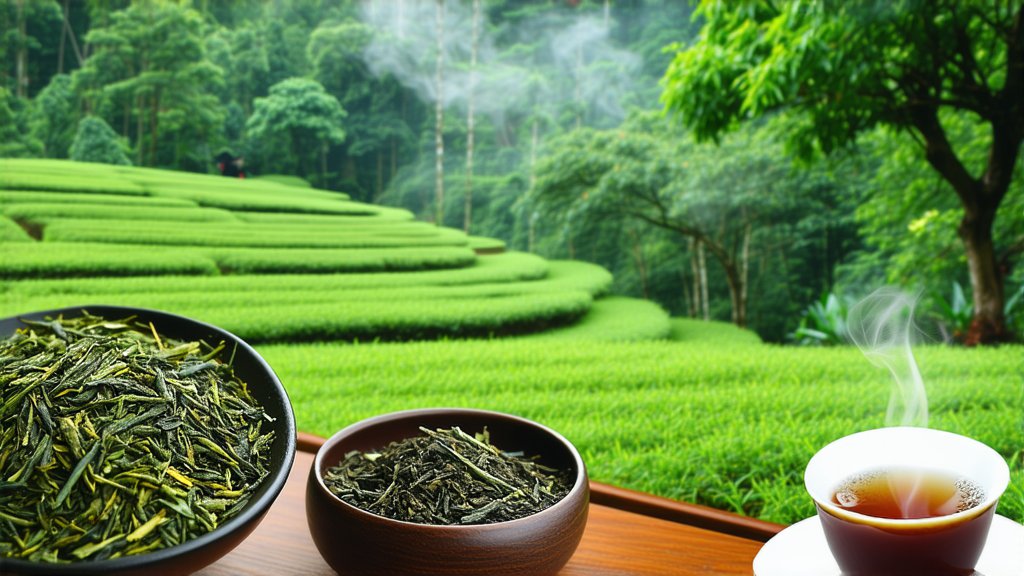
Keemun black tea, a gem from the rich tapestry of Chinese tea culture, stands as a testament to centuries-old traditions and meticulous craftsmanship. This exquisite variety, originating from Qimen County in Anhui Province, China, has captivated tea enthusiasts worldwide with its distinctive flavor profile, aromatic complexity, and deep historical roots. In this exploration, we delve into the history, varieties, intricate production process, and nuanced art of appreciating Keemun black tea.
A Glimpse into History
The story of Keemun black tea begins in the early Tang Dynasty (618-907 AD), but it wasn't until the 19th century that it gained international prominence. Its name is derived from the Pinyin transliteration of "Qimen," the county where it was first produced. During the Qing Dynasty, Keemun became one of China's most important exports, particularly after the Opium Wars opened up trade routes. It played a pivotal role in shaping the global tea market and influencing the development of other black teas around the world.
Varieties of Keemun Black Tea
Keemun black tea encompasses several sub-varieties, each with unique characteristics shaped by factors such as altitude, climate, and cultivation practices. The three primary types are:
-
Keemun Hao Ya (Keemun Grade A): Known for its full-bodied flavor and rich aroma, this variety undergoes a more extended oxidation process, resulting in dark, glossy leaves and a robust taste with hints of orchid and fruitiness.
-
Keemun Xian Ya (Keemun Grade B): Slightly less oxidized than Hao Ya, Xian Ya offers a lighter body with floral notes and a smoother finish. Its leaves are typically smaller and more evenly rolled.
-
Keemun Zhen Ya (Keemun Grade C): The youngest and least processed of the trio, Zhen Ya features a delicate flavor profile with subtle sweetness and a fresh, greenish hue. It's often favored by those who prefer a lighter, more vegetal taste.
The Art of Craftsmanship
The production of Keemun black tea is a labor-intensive process that requires precision and expertise at every stage:
-
Plucking: Only the top two leaves and a bud are hand-picked during the optimal growing season, ensuring the highest quality raw material.
-
Withering: Freshly picked leaves are spread out thinly on bamboo mats to wilt under natural sunlight, reducing moisture content and softening the cell walls for easier rolling.
-
Rolling: Leaves undergo multiple rounds of rolling to break down cell structures, releasing enzymes that facilitate oxidation. This step also shapes the leaves into tight curls characteristic of Keemun tea.
-
Oxidation: Controlled exposure to oxygen transforms the green leaves into a dark brown color, developing complex flavors and aromas. The duration and conditions of oxidation vary based on the desired grade.
-
Firing: Finally, the tea is dried over charcoal fires or in electric ovens to halt oxidation and lock in the flavors. This step also contributes to the tea's distinct smoky undertones.
Appreciating Keemun Black Tea
To truly savor Keemun black tea, one must engage in a sensory journey that goes beyond mere consumption. Here's a guide to the art of tea appreciation:
-
Warming the Teapot: Begin by rinsing your teapot and cups with hot water to maintain a consistent temperature during brewing.
-
Measuring Tea Leaves: Use approximately 3 grams of loose leaf tea per 200ml of water for a balanced infusion.
-
Water Temperature: Heat water to just below boiling point (around 95°C or 203°F) to avoid scalding the delicate leaves.
-
Steeping Time: For the first infusion, steep for about 3 minutes. Subsequent infusions can be longer, adjusting according to personal preference.
-
Observation: As the tea brews, admire the transformation of dry leaves into a vibrant infusion, witnessing the unfurling of tea leaves.
-
Aroma Evaluation: Inhale deeply before sipping to detect the tea's bouquet, noting any floral, fruity, or smoky notes.
-
Tasting: Take small sips, allowing the tea to coat your palate. Notice the balance between astringency and sweetness, and how the flavors evolve with each sip.
-
Multiple Infusions: Keemun black tea can be enjoyed through multiple infusions, each revealing different layers of complexity.
In conclusion, Keemun black tea is not merely a beverage; it's an experience that connects us to ancient traditions and the natural world. Its rich history, diverse varieties, meticulous production process, and the meditative act of tea appreciation all contribute to its timeless allure. Whether you're a seasoned connoisseur or a curious newcomer, embracing the world of Keemun black tea promises a journey filled with discovery, tranquility, and profound satisfaction.